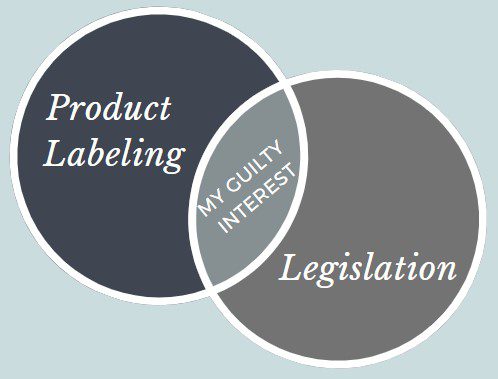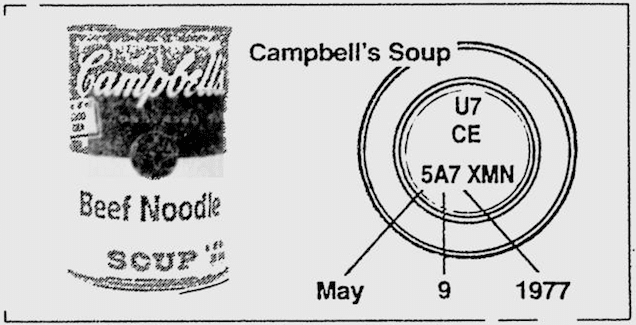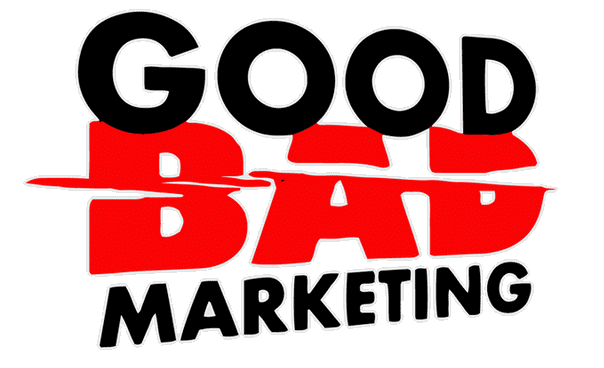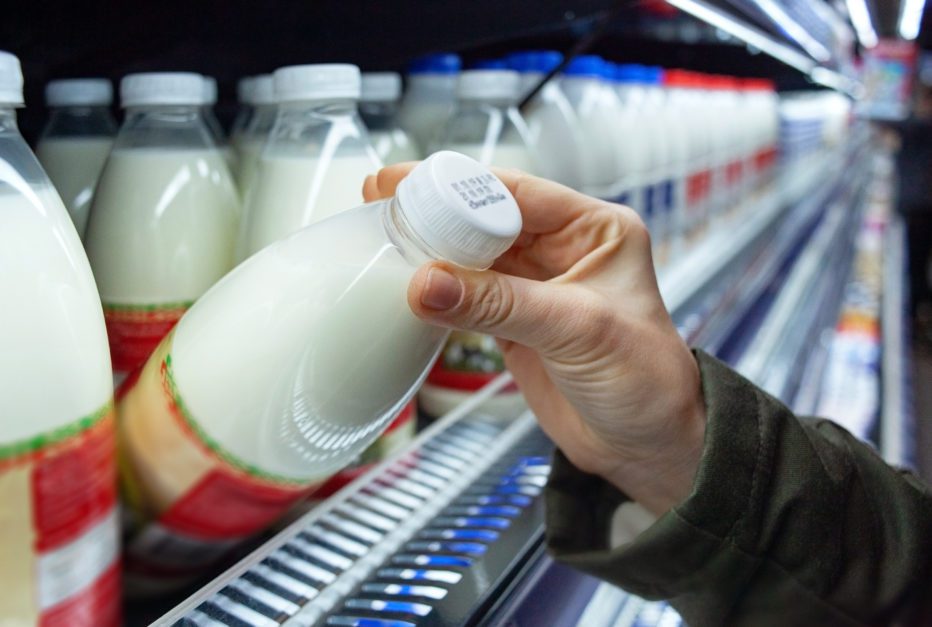Whenever I go back home to visit Australia, I have a favorite restaurant that sells amazing kangaroo burgers. Enormously delicious, highly recommended, and very safe. Nearby is a nougat factory where you can watch the staff make these sweet confections through a glass window while snacking on a free sample. Incredibly delicious, highly recommended, and extremely safe. It was on one such visit that a fellow patron idly browsing the products turned to me and said, “you know, back in my day we didn’t have any of this food expiration date nonsense.” Not a good idea, not recommended, and highly dangerous!
Marketing is a field that affects all consumers, and I love discussing my field. However, product labeling legislation is one area that is far too boring for most situations. But this person brought it up, so this was my chance to go into lecture mode!

I explained to the middle-aged gentlemen about how many lives had been saved by “best before,” “use by” and other food expiration dates. And how “back in his day” people were sickened far more often, costing the economy as a whole far more. When it comes to far-reaching legislation, a decision is made based on the cost-benefit analysis on a large scale, not individuals. Furthermore, not everyone has keen enough senses to see mold, feel bacterial films, or smell rot. Or such an impeccable memory to track the age of their food.
Nor is shelf time at the supermarket consistent. In the US, one week after Thanksgiving is the worst time to shop as everyone has already stocked up. Any fresh food you buy has been sitting on the supermarket shelf for at least 7 days. Compare the harvest date on the label for extra virgin olive oil at the next two supermarkets you visit. I have seen 2 year old EVOO sold at one supermarket the same day that 6 month old EVOO is sold at another, and while this is a taste and nutritional concern, not a safety one, it is one of the few non-baked, non-dairy supermarket products where the label must state the age of the product.
Finally, nor is spoilage time consistent. Technologies and recipes differ among brands, regions and over time. An excellent example of this is how organic variants of foods may have a shorter shelf life because they cannot be irradiated, despite the technology being perfectly safe and extremely effective at killing pathogens and extending shelf life.
Your Grandparents’ Date Labeling
No, your grandparents didn’t have the same food safety labels as we do today, but nor were they as far disconnected from their food sources, or consuming as much packaged or pre-made food.
Before food expiration date labels were introduced in the 1970s, manufacturers used “closed” dating systems with symbols and numerical codes undecipherable by the consumer. This 1979 Washington Post article walks you through the deciphering process. In one 1975 study of 250,000 consumers, 89% favored “open” dating with a clear day, month, and year. Since then, individual US states have released their own open date labeling laws through the 1970s, while Australia and New Zealand share a unified Food Standards Code, started in 1978.

Waste
The downside to this is food wastage by both retailers and consumers. Academics calculate that food wastage costs the average American family $2,275 annually. Confusing terms such as “baked for”, “sell by”, “best before”, “freshest before”, “expires on” and “use by” are still not federally regulated in the US, and Americans are confused. The good news is Congress is considering a new federal Food Date Labeling Act, but standardizing text won’t matter as much as you’d think. Only 20 percent of food wasted in U.K. households is due to misinterpretation of date labels. 37% of American study participants reported they “always” or “usually” discard food near the printed date, no matter the surrounding words.
Packaging labels represent a small part of product safety legislation that has slowly evolved over time. Consumers are asking for better labeling, not the abolishment of it. Those seeking abolishment of such safety labels are a tiny ignorant minority. Yes, Lifehacker, expiration dates are not the clearly defined science most people expect, and the old man was partly right; most of us can ignore best before dates a lot of the time, and just use our senses.
How Long is Something Good After the Expiration Date?
Look up the US government foodsafety.gov FoodKeeper site, or Android or iPhone app. It’s FDA, USDA and CDC partnered, so you’re using a trusted source.
Other alternatives include the StillTasty Keep It or Toss It site, and eatbydate.com. These resources are also great for settling household (marital) arguments.
That is until accurate smart food labels, talked about since 2014, come to market.
Apps for Food Expiration Dates
If you’re looking for an app to track your food, there are plenty on every app store. We’ll release our own comparison guide soon, but in the meantime here’s a June 2020 rundown of 5 iPhone food expiration tracker apps from another site.
You may also unknowingly have such an app installed. For example, my LG smart fridge’s ThinQ app, is good for filter change reminders, turning on and off the ice maker, and yes, tracking the food in my fridge, and expiration dates.
A Piece of the Puzzle
Food expiration is similar to infant mortality in that many people, especially older generations or people from other countries, complain about current recommendations, best practices and laws. However, just as infant mortality in the US has plummeted by 75% over the last 50 years, and continues to inch down slowely every year, our pracices and legislation when it comes to food handling, distribution, labelling and smart technology continue to drive down food poisoning rates. Expiration dates are one contributing factor.
Update: Adam Ragusea Made a Video on This
4 years after the initial publication of this article, YouTube influencer Adam Ragusea did a video on this very subject, covering the same topics and making the same points. As always from him, it’s a well written and produced video. One excellent point he makes is that expiry dates are often round numbers after manufacture (e.g. exactly 2 years), perfectly illustrating that shelf life before expiry is often arbitrary, leading to waste and increased purchases. I can’t recommend this video enough.
Useful Resources:
- FoodKeeper Site (on FoodSafety.gov), or the FoodKeeper app for iPhone and Android.
- stilltasty.com has an excellent Keep It or Toss It guide
- eatbydate.com
Storage and Defrosting Guides:
- Food Storage 101: Where And How Long To Keep Your Favourite Foods | Lifehacker
- The Big Thaw — Safe Defrosting Methods for Consumers | USDA
- The Best (And Quickest) Ways To Thaw Frozen Food | Lifehacker
Further Reading:
“Did Al Capone stop milk going off across America?
It has never been established if this story is 100% hard fact, but it still bears telling . There’s a rumour that the infamous American gangster campaigned for expiry dates to be clearly printed on milk bottles, allegedly due to one of his relatives becoming ill after drinking sour milk without realising it had turned.” – Udder-ly astounding stories about milk | BBC
- The Dating Game: How Confusing Food Date Labels Lead to Food Waste in America | Natural Resources Defense Council & Harvard Law School’s Food Law and Policy Clinic
- Misunderstanding Food Date Labels Linked With Higher Food Discards, 2019, Johns Hopkins Bloomberg School of Public Health
- Food Waste Is a Major Problem. Confusing Date Labels Are Making It Worse | Pew Trusts
- Visual and tactile smart food labels
- How ideology affects food waste | Adam Ragusea (also embedded below)





